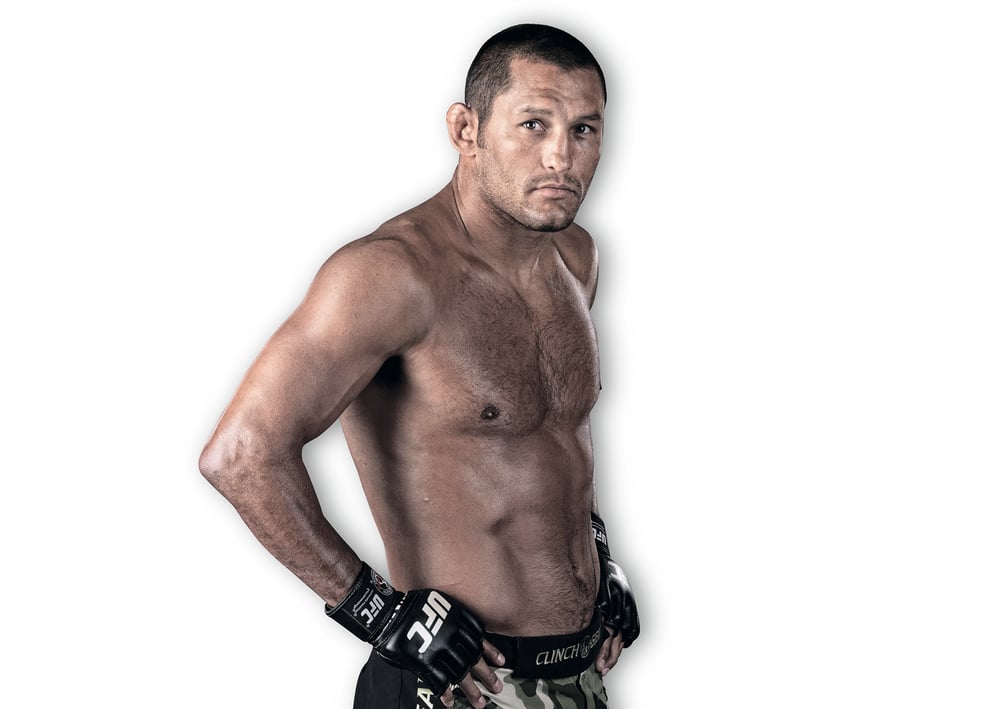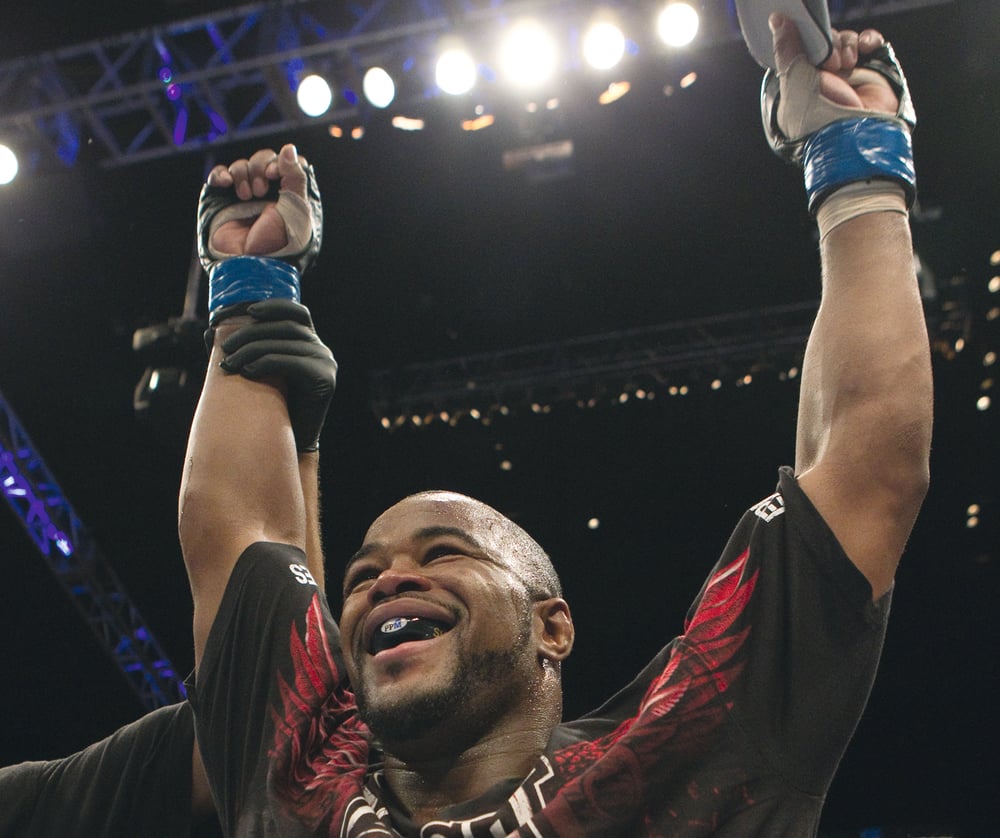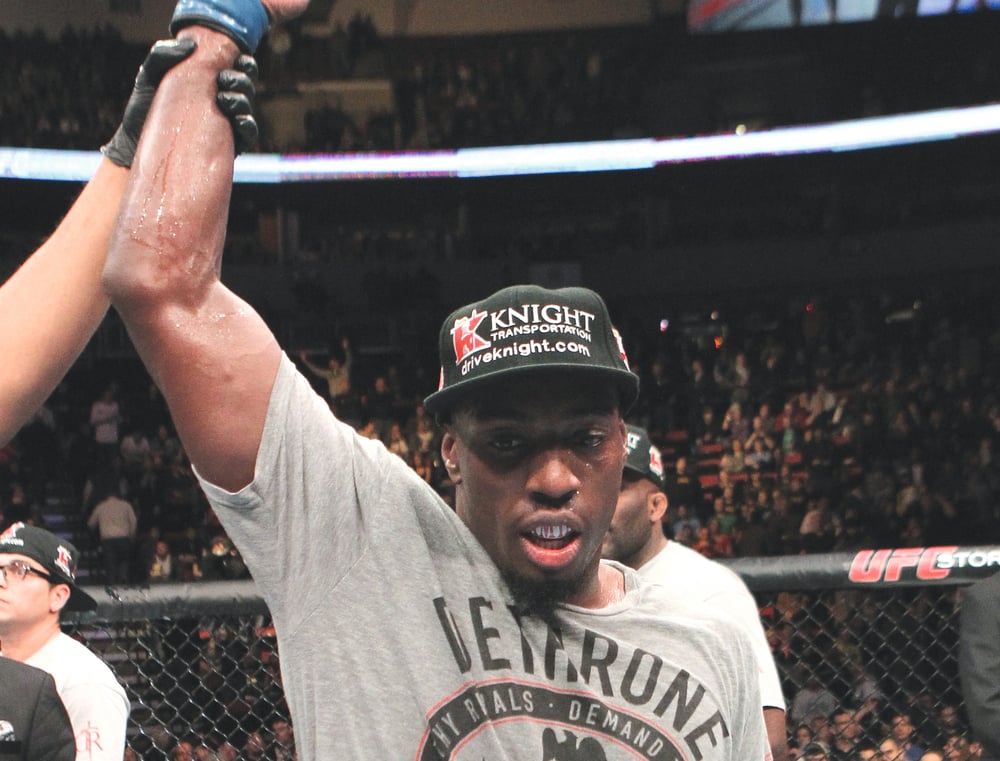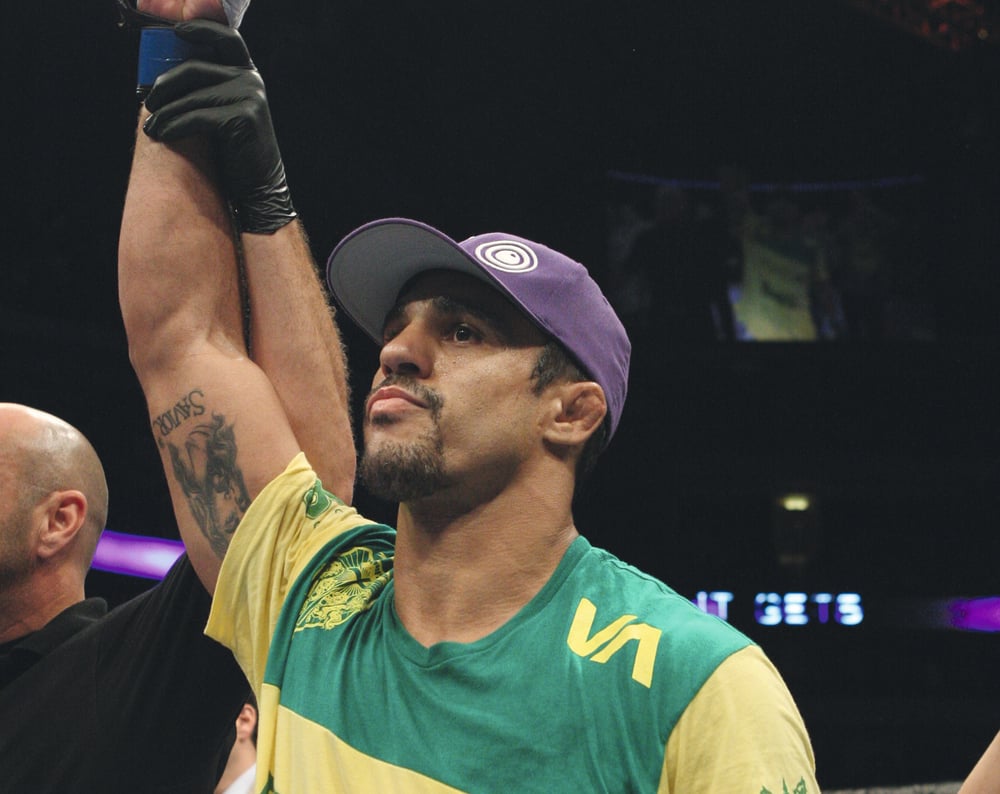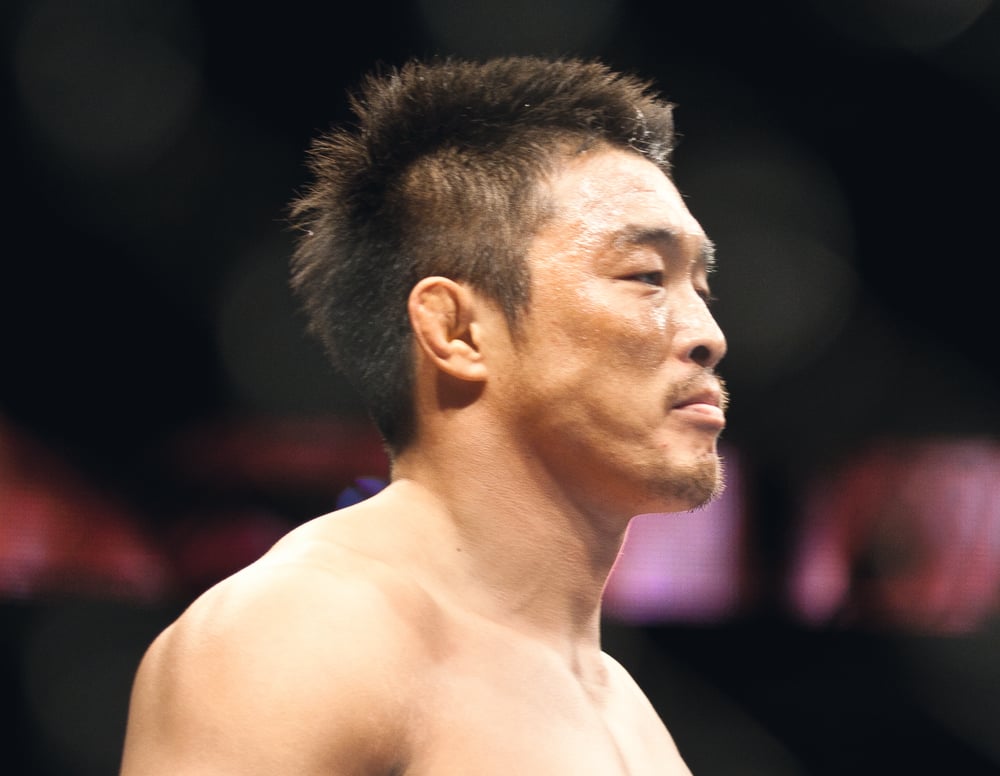
Issue 078
August 2011
FO’s experts and statisticians analyze three upcoming bouts: Fedor Emelianenko vs. Dan Henderson; Rashad Evans vs. Phil Davis; Vitor Belfort vs. Yoshihiro Akiyama.
First, FO analyst Andrew Garvey takes a look at the state of play: what are the career implications for the combatants? Where are they coming from, and what will victory or defeat hold? Next, our technical advisor Pete Irving breaks down the athletic considerations.
Fedor Emelianenko (31-3 1NC) vs. Dan Henderson (27-8)
Strikeforce, Fedor vs Henderson
July 30th 2011 Illinois
4th†
Fedor’s 10-year 27-fight unbeaten streak (broken by Fabrico Werdum in 2010) is the fourth best in MMA history.
9
Of Fedor’s 16 submission wins, nine have come by arm locks. Henderson has only tapped three times, but two were due to armbars.
0
Both Fedor and Henderson are known for big, fight-ending right hands but neither have ever been stopped due to strikes in a combined 70 fights, despite being dazed on occasion.
1"
He will likely be the lighter athlete come fight night, but Henderson will actually have a one-inch height advantage over Fedor at six-foot-one
THE BIGGER PICTURE
One of the most decorated fighters in MMA history, reigning Strikeforce light heavyweight champion Henderson (27-8) won the four-man UFC 17 tournament way back in 1998, took the 32-man Rings: King of Kings competition the following year and is the only man to ever simultaneously hold major world MMA titles in two weight classes when he was a double Pride champion in 2007. Russian fighting legend Emelianenko (31-3 1NC) was for many years the sport’s dominant heavyweight and may have inspired more slavish hardcore fan devotion than any fighter in MMA history. Two hugely successful fighters, with chilling knockout power (even if they ‘only’ have 20 KO/TKO wins between them) and entertaining fighting styles, this should be incredibly fun to watch, even if both are clearly past their best.
Even if Fedor is lighter than his usual 230lb-ish, this will be Henderson’s first fight at heavyweight since his December 2002 submission loss to Antonio Rodrigo Nogueira. Since then, only Anderson Silva (at 185lb) has put Henderson away inside the distance. Small enough to regularly move between middleweight and light heavyweight, common sense says Henderson really shouldn’t be fighting at heavyweight. But Emelianenko is hardly a giant and, at 34 (six years Henderson’s junior), has looked sluggish and shopworn since 2009. Besides, since the start of 2007, Henderson is 4-1 at light heavyweight, his only loss by decision to Quinton Jackson, and a less impressive 2-2 at middleweight. Henderson is coming off two strong wins at 205 – a blistering first round KO of Renato Sobral and a ‘H-Bomb’ right hand KO over Rafael Cavalcante early in the third round of a close fight. Weight may not be as big a factor in this fight as many expect. The real questions here are likely to be about Emelianenko.
Back-to-back losses to Fabricio Werdum and Antonio Silva – a quick submission he should have easily evaded and a long, drawn out battering respectively – have largely dismantled the long-held myths surrounding his divine invincibility. Fedor is mortal after all, and like all men, can’t fight off the passage of time. Has age prematurely caught up with him after a lifetime of hard martial arts training? Did his luck simply run out?
Did he stop improving, allowing others to pass him by? Or was he carefully matched for so long that he was bound, on finally facing something close to top level competition (and some say you’d have to be fairly charitable with your definition of ‘top level’ to put Werdum and Silva there), to start losing? Strong, stubborn and skilled, Henderson will be asking him a lot of very difficult questions once the bell rings.
TECHNICAL BREAKDOWN
Although the two are stylistically distinct from one another, there are numerous interesting parallels in their careers and technical abilities. Both men have consistently dominated and overcome bigger fighters, largely thanks to outstanding throwing ability.
Henderson is tied 10th for takedown defense success during his time in the UFC, he prevented 80% of attempts to get the fight to the ground
Henderson’s roots are in Greco-Roman wrestling, Fedor’s in the Russian disciplines of judo and sambo. The common factor is their ability to throw and execute takedowns with such subtlety and timing they almost make it appear that the opponent has simply fallen over.
Likewise, both men are able to translate that wrestling power into punching power, connecting with all their body weight, with knockout power in both hands. Fedor throws stiffer, straighter, karate style punches, or whips around with the infamous sambo ‘casting punch.’ Although his fists may suffer injury from some wreckless hand connections, he lands with the full weight of his body in each blow. Henderson similarly puts his body into his punches, but tends to lurch in with his head forward as he delivers the bomb of an overhand. Where Fedor has an advantage is in his greater vocabulary of strikes. Henderson has no kicking ability to speak of, for example, he threw himself to the floor attempting to head-kick Rich Franklin, narrowly recovering with a fast scramble to a single-leg. Fedor, though he rarely goes high, is capable of delivering great power with the body-kick.
Once again we see parallels in their approach to the ground game. Both men bring excellent punching mechanics to ground ‘n’ pound, especially inside the guard, shucking the legs and returning with devastating blows. Once again the difference is in versatility.
Fedor is far more inclined to seek the submission, with a preference for chokes from the back and the straight armlock, with which he dispatched Henderson’s Team Quest partner Lindland. Neither the Russian method or the American wrestling style favors fighting from your back, and neither man is a natural guard player, but the shorter limbed Henderson is lost more off his back than Fedor, who has demonstrated finishing ability from his back. Of 27 career wins, Henderson has submitted only one opponent, way back in his 1997 debut at the Brazil Open Vale Tudo, in the second bout against Eric Smith. Of Fedor’s 31 wins, half have come via submission. It’s quite possible that victory hinges on who establishes top position.
Rashad Evans (15-1-1) vs. Phil Davis (9-0)
UFC 133
August 6th, Philadelphia
37:55
Come fight night, in the one year and 69 days Rashad Evans will have been inactive, Phil Davis has fought three times, notching 37 minutes and 55 seconds in the Octagon.
116-17
Davis ended his NCAA Division 1 college wrestling career with 116 wins and 17 losses. 48-34 was Evans’ college wrestling record.
0
In his 12-fight UFC career, Rashad Evans has never attempted a submission.
44*
Evans has completed 44 takedowns in his UFC career, the seventh most of any UFC fighter. That’s 1.38 successful shoots a round.
THE BIGGER PICTURE
Originally intending to step away from the Octagon and refine his skills after a pedestrian decision win over Antonio Rogerio Noguiera in March, the unbeaten ‘Mr Wonderful’ (9-0) could be just one win away from a UFC light heavyweight title shot. Standing in his way is one of the sport’s unluckier stars, former champion Rashad. After his safety-first decision wins over Thiago Silva in January 2010, then bitter rival Quinton Jackson four months later, Evans (15-1-1) was scheduled for a shot at Mauricio ‘Shogun’ Rua at UFC 128 in March. But a knee injury forced him to withdraw and instead teammate Jon Jones was offered the fight and tore Rua to pieces. With the UFC hype machine in full flow, Evans-Jones was set to be a huge fight, but a lingering hand injury forced Jones to opt for surgery, leaving Evans to either sit on the sidelines for several more months or defend his number-one contendership against Davis. At 26, Davis is a tremendously gifted, athletic and inventive wrestler with superstar potential, but Evans is just a much more versatile, experienced fighter. In three years’ time, Davis would likely win handily but this opportunity may just be arriving a little too soon.
TECHNICAL BREAKDOWN
Until now Rashad has gone into his fights with a clear advantage in his wrestling ability, but four-time Division 1 all-American Davis surpasses Evans with his wrestling credentials. Whatever doubts may hang over Evans’ BJJ black belt, his ground experience outstrips Lloyd Irvin blue belt Davis. Of course, the wrestling and ground ‘n’ pound elements change the submission game substantially and diminishes the significance of the jiu-jitsu ranking deficit with regards to this bout.
Out of the 196 UFC strikes Phil Davis has landed, an unusually high 63%* of those have been on the ground
With Davis’ relatively short time in the sport of MMA, Rashad is certainly the more developed striker of the two. Rashad utilizes a great deal of movement, at times to the chagrin of fans, as the minutes tick by without any decisive connections. He often leads off with the jab from the hip, as his lead hand hangs low, bringing the jab diagonally up. The jab is normally just as a range finder, distraction shot, and the real damage gets done with the right and the left hook.
While he may refuse to engage for long periods, when he does it’s invariably worth the wait. The overhand right that put Liddell to sleep was a spectacular example of Rashad’s finishing ability. And it’s not just in his hands that he has knockout power – who could forget the spectacular head-kick knockout of Sean Salmon at UFC Fight Night 8?
The modestly titled ‘Mr Wonderful’ Davis though has yet to produce a stoppage with his striking since stepping up to UFC level. It’s safe to say that, as yet, the ‘Wonderful’ moniker does not refer to his kickboxing ability, with his slow, pawing hands, and hips that chop straight up on his kicking form.
Vitor Belfort (19-9) vs. Yoshihiro Akiyama (13-3 2NC)
UFC 133
August 6th, Philadelphia
7
The majority of Yoshihiro Akiyama’s 13 wins are via submission (seven), while Vitor Belfort has only surrendered once in MMA competition – a guillotine loss to Alistair Overeem in 2005.
3
Vitor Belfort has beaten three former UFC fighters in submission grappling competition. In 2001 he defeated Genki Sudo, Ricco Rodriguez and Ricardo Almeida on points at ADCC
21
Belfort has been taken down only 21 times in his 15-year 28-fight MMA career.
8
Despite being one year older than Belfort, 35-year-old Akiyama started his MMA career eight years after ‘The Phenom’.
THE BIGGER PICTURE
If Akiyama didn’t shun weight cutting he’d almost certainly be fighting at welterweight, and if none of the fondly remembered footage of a pre-1999 Belfort existed Vitor might be fighting on UFC undercards and prelims. But, in Philadelphia, Akiyama will face a big middleweight whose enduring fame rests largely on his achievements from the last century. Gifted and experienced but legendarily inconsistent, Belfort (19-9) looked wary of Anderson Silva in their February title fight and ‘The Spider’ made him pay for his hesitancy with a stunning front-kick KO in the first round. Fast and heavy handed, Belfort is capable of some truly destructive work but does less well later in the fight or when an opponent stands up to him and fights back as the crowd-pleasing Akiyama (13-3 2NC) loves to. Coming off ‘Fight of the Night’ bonuses in all three of his UFC appearances, Akiyama seems largely unconcerned with wins and is far more interested in giving fans value for money. It may not be the safest strategy for a 35-year-old with high international judo credentials but he’s immensely fun to watch. It may not serve him well against Belfort, though, if only because of the Brazilian’s size advantage and still-heavy hands.
TECHNICAL BREAKDOWN
Over the last few years Belfort’s boxing has become far more refined, and his ability to pace himself is far more mature. Southpaw Belfort hangs his lead right hand a little low, casting out a very relaxed jab that cues up the sledgehammer of a left cross. Vitor stands with a pronounced internal rotation of the lead foot, a typical boxer’s habit, which makes shin checking particularly difficult. He kicks well with his left leg, normally to the body but occasionally high, often leading with the kick instead of the jab. Where Belfort was once a very straightforward pressure fighter, he is now far more versatile with his footwork, capable of giving ground and changing angles, patiently awaiting the moment for the perfect punch. Belfort’s last three victories came thanks to that exceptional left cross, knocking out Matt Lindland, and Terry Martin while TKO’ing Rich Franklin with a flurry that began with a decisive left cross.
Akiyama only has a 33%* success rate with his strikes in the UFC, having missed 269 of 401 attempts
Akiyama’s enthusiasm for striking surpasses his technical ability, but nevertheless his striking yields results thanks to his power and his penchant for the unorthodox. How well he deals with Belfort’s stance remains to be seen, but it does critically rob him of one of the best weapons in his striking arsenal – the rear-leg low point. He may target Belfort’s inner thigh, but would leave him dangerously aligned with the Brazilian’s power hand. Akiyama did not struggle with Leben’s lefty stance and took him down with little trouble, but Chris Leben is a far less tidy prospect than ‘The Phenom.’
* Figures courtesy of FightMetric
† Figure courtesy of FightMatrix
...

